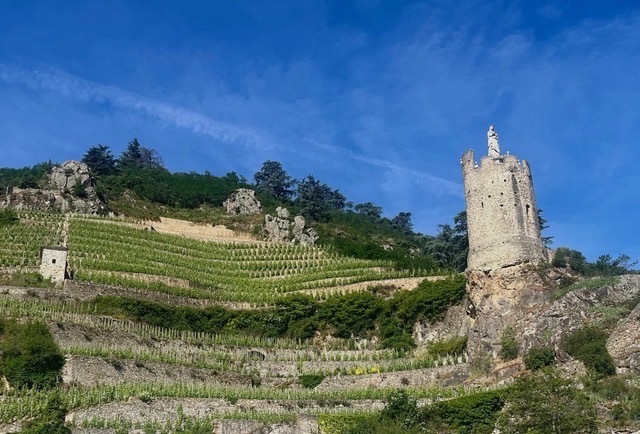Neil Sowerby obviously over-indulges on a French foodie road trip
LIKE Boeuf Bourguignon, Coq au Vin is one of those emblematic dishes of French cuisine. You’ll find both aplenty in Dijon restaurants, but there’s another chicken stew whose renown goes more under the radar. I discovered a version of Poulet Gaston Gérard or Chicken Dijon in a backstreet wine bar called La Fine Heure, which combines innovation as an ‘urban winery’ with tradition in its hyper-local food menu.
Our own Heston Blumenthal would accept no other breed for the ultimate roast chicken
As a dish with a back story, Poulet GG seems the perfect entrée for my escapades along the Vallée de la Gastronomie, a 600km road trip from Dijon to Marseille. From Lyon onwards it follows the River Rhône. In the end I only managed half of it, calling a halt in Valence, from where the TGV could sweep me, more than replete, homeward via Paris and Eurostar. Comfortable in the memory I have also visited marvellous Marseille not so long ago.
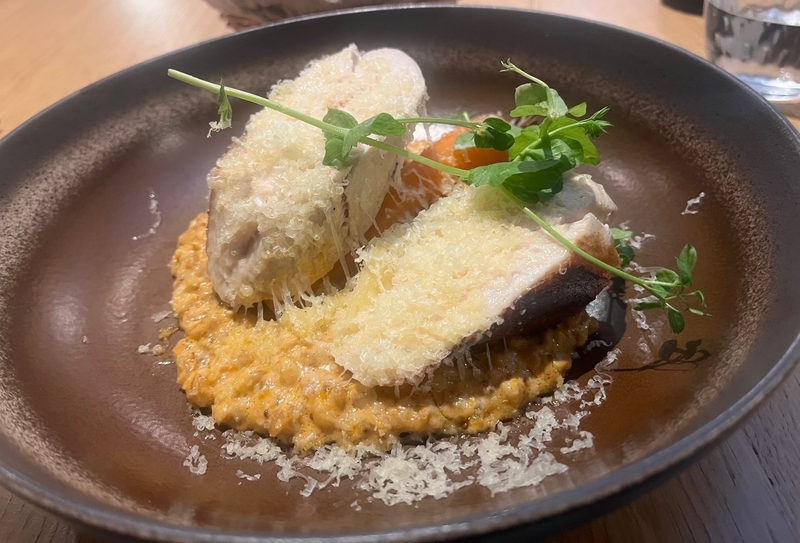
Poulet Gaston Gérard from La Fine Heure
Confidentials
Chicken Gaston Gerard dates back to the 1930s and was created, like so many classic dishes, by accident. Imagine having round for dinner Curnonsky, the most famous food critic of the age. Gaston, Mayor of Dijon, was the host; in the kitchen, his wife Genevieve ruled the rooster (sic), accidentally knocking a pot of mustard into the poultry dish she was cooking. Quelle catastrophe, but she rescued it by mixing in white wine, cream and grated Comté cheese. Curnonsky was so impressed with the result he named it after her husband. C’est la vie, Madame.
The best Dijon mustard – go for Fallot’s tarragon treat
I’m sure La Fine Heure’s kitchen uses Edmond Fallot mustard in that main I so enjoyed. Probably a better moutarde than the one I had knocked up earlier in a Fallot outlet five minutes’ walk away. In small groups the public can join in a masterclass to learn the secrets of the only Dijon mustard still made in the traditional way with local seeds. Grinding them by hand is hard graft, the blending in of vinegar and salt just a matter of judgement. As part of the 12 euro price you get to take home your pungent little tub.
Did mine pass quality control? Let’s say I was happy to purchase my Fallot fave, tarragon, from a 40-plus roster that stretches to varieties that include cassis, walnut and yuzu (yes, they export to Japan).
I’d say look no further but there are rivals around. Check out the fancy Maille store on the Rue de la Liberté. And you’ll find mustards from across France at Le Manège à Moutardes in Dijon’s Cité Internationale de la Gastronomie et du Vin. This educational culinary theme park opened just three years ago and now attracts up to a million visitors a year. It contains exhibitions (some free, some ticketed), restaurants and a cornucopia of stores, including the Cave de la Cité, offering 3,000 wines from around the world, including 250 served by the glass.
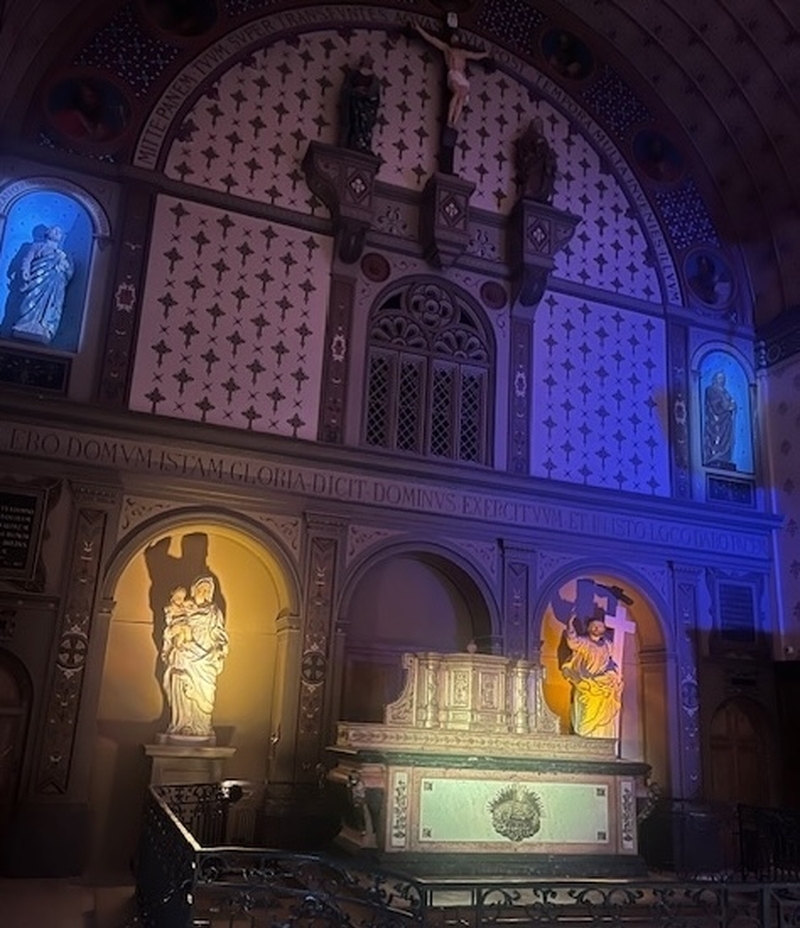
Do you worship wine? Check out the Chapelle des Climats, former church of the main Dijon hospital that stood on this site for centuries. It now hosts an immersive, interactive exhibition taking visitors on a journey through Burgundy’s vineyards and the food heritage of the Burgundy-Franche-Comté region. Such a good place to start a gastronomic pilgrimage, but the holy grail is surely among the ‘posh’ chicken farms of Bresse two hours south. But first enjoy a meandering drive down through the Burgundian vineyards…
The artisan delights of Crème de Cassis and Marc de Bourgogne
Parallel with the A6 trunk road, the quieter D974 is wine lover’s nirvana. A litany of famous names flashes past. Gevrey-Chambertin, Morey St-Denis, Vosne-RomanRomanée, Nuits Saint Georges are workaday communities producing legendary wines few of us can splash out on. At the stylish Hotel de Bellevigne in Chambolle-Musigny a three course set lunch is well-priced at 29.90 euros with affordable local wines to match.
Burgundy, though, isn’t just about wine. Two stop-offs on a drowsy afternoon offer proof that its liqueurs and spirits are in good indie hands. At Arcenant, among the orchards of the Hautes-Côtes de Nuits, we discovered Jean-Baptiste Joannet, liquoriste extraordinaire. National awards have gone to their versions (16% and 20%) of Crème de Cassis, the blackcurrant liqueur that combines with white wine to make a classic Kir aperitif. All the blackcurrants – and they have to be the special Noir de Bourgogne variety – are sourced from the Joannet family orchards.
A joy also to sample their other fruit macerations. I’d recommend the delicate raspberry made with the Lloyd George variety (I should have asked) and the rarer Crème de Guignolet, made out of morello style cherries.
Headier stuff is another traditional speciality, Marc de Bourgogne, which is having a renaissance, in no small measure thanks to Mat Sabbagh and his SAB’s brand. This former international Pernod Ricard exec has returned to his roots to revive the traditional role of ‘bouilleur ambulant’. This entails driving a copper still on wheels around villages. Locals bring him roots, fruit and grapes to distill. It’s the last of its kind in the region and the antithesis of bland industrial production.
Alambic Bourgogne, his base outside Beaune, is altogether more state of the art, distilling a substantial range of spirits. In the tasting room Mat’s wife Amelie must have poured samples of most of them. They are exquisite, especially the core product,. To create it he vapour distills eau-de-vie de marc from the skins and seeds left over after grapes are pressed for wine. This is turned into classic Marc by ageing in oak barrels for at least two years. The aperitif star is an Amer de Gentiane, a 32.5 per cent gentian root distillation flavoured with cardamom, angelic and citrus. Popular in hip Paris bars (and with me).
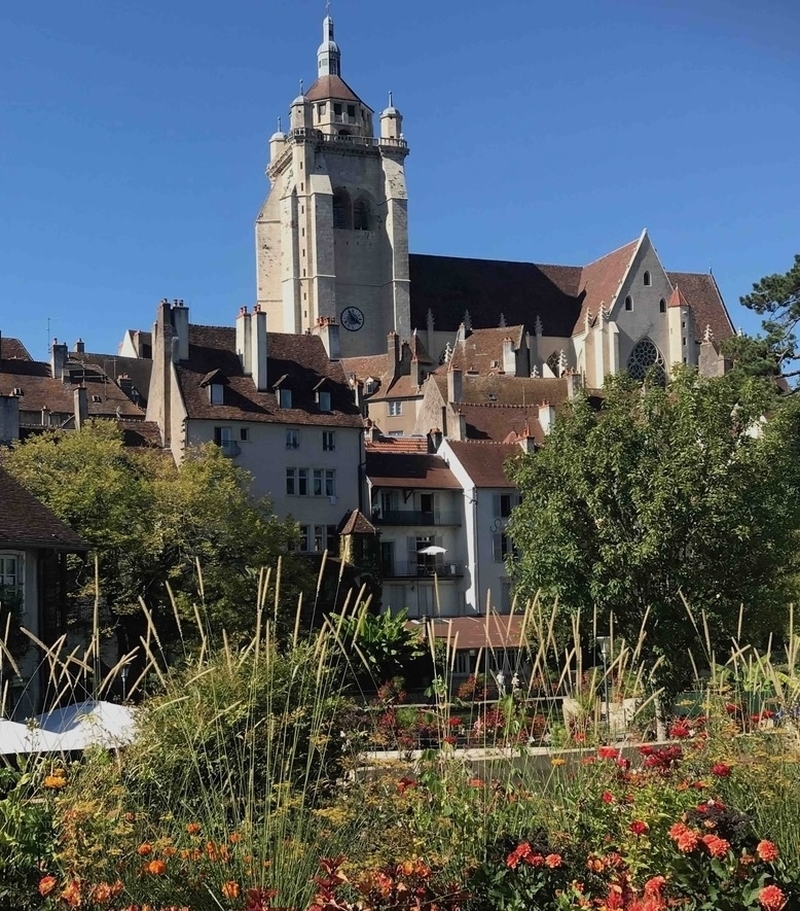
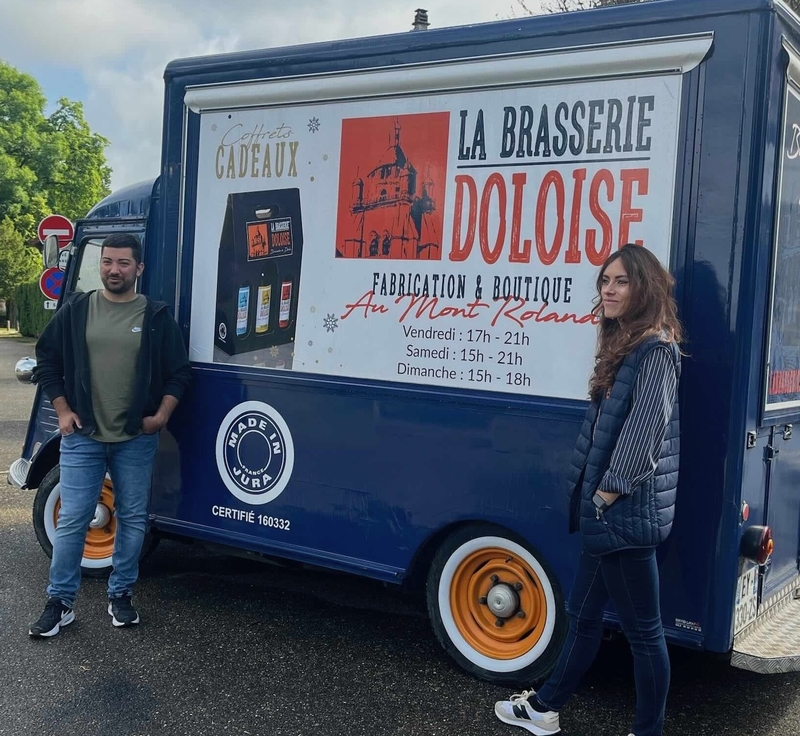
After such alcoholic intensity a refreshing beer is in order, en route for the Jura, easternmost limit of the Vallée. You’ll find bottles from Brasserie Doloise across the region but the perfect spot to sample their organic Ambrée or IPA is their brewery garden. It’s on the breezy heights of Le Sanctuaire Mont Roland, an ancient pilgrimage site. A 10 minute drive away is laid-back Dole (above), warren of turreted Renaissance mansions and waterways spilling from the River Doubs. It’s the birthplace of Louis Pasteur; visit the old tannery turned museum in his honour.
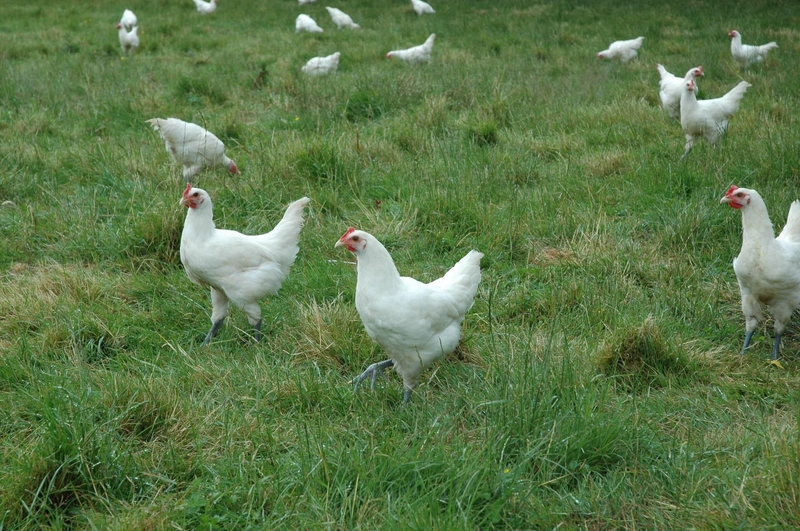
Free range foraging for the Poulets de Bresse
Alecs
Poulet de Bresse – so succulent they named a service station after it
At last we approach the ‘Holy Grail’. It was called the ‘Chicken of Kings’ by Jean Brillat-Savarin, the 18th century culinary savant, and its reputation lasts to this day, with appellation d’origine contrôlée and EU PDO status. Reared to strict standards on small farms in a tightly-controlled appellation of Bresse, this bird is prized for its rich, gamey flavour and tender flesh. Only the local white Bresse Gauloise breed is allowed and only a total of 1.2 million are reared annually. You can identify them by a series of rings, seals and labels. And the heads and characteristically slate blue legs that remain on. Nothing is left to chance.
Of course, you pay for this attention to detail. It’s destined for Michelin starred restaurants and fancy food halls. But amazingly you can snap up bargain rotisserie Bresse at a motorway service station on the A39 between Dijon and Bourg-en-Bresse. You can’t mss the ‘Aire du Poulet de Bresse’; it’s advertised by a 20m high metal chicken and is the largest retailer of the bird in the land.
We cut out the middle lane and head straight for one of the accredited farms. In the fields above GAEC Laurency the white birds are rooting for grubs and insects in the fields. This is crucial to imparting the special Bresse flavour.
Our farmer guide Anthony Marmey talks us through the rearing process. Bought in at two days old, the birds spend five weeks in a heated cabin. They are fed cereals and dairy products – a diet kept low in protein so they will forage when released outside. Despite being brought in each night, at least 10 per cent is lost to predators.
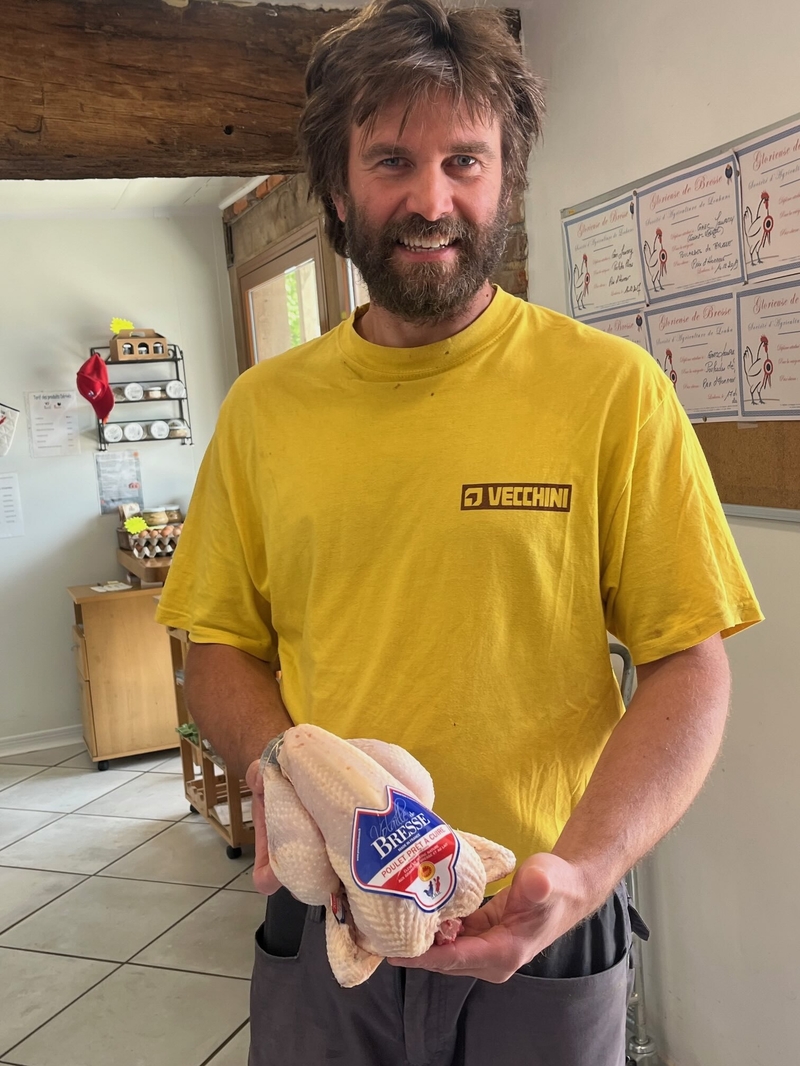
Anthony is proud of their acclaimed product
Confidentials
After four months free range the standard poulets are then “finished” in an épinette, a cage in a darkened fattening shed, where they are intensively fed on maize and milk. Unusually the Laurency farm chickens are allowed to be slaughtered onsite. All this is a world away from nightmare-ish mass production. So is the taste. The taste of La Vraie Gastronomie.
Our own Heston Blumenthal in his BBC Series In Search of Perfection would accept no other bird for the ultimate roast chicken. Another of this poultry’s champions has been Bourg-en-Bresse born chef Georges Blanc, whose flagship restaurant at Vonnas this year lost the third Michelin star it has held for 44 years. Statement restaurants play a significant role in the Vallée. By all means go star gazing if your wallet will allow, but many Michelin chefs also offer more casual dining outlets.
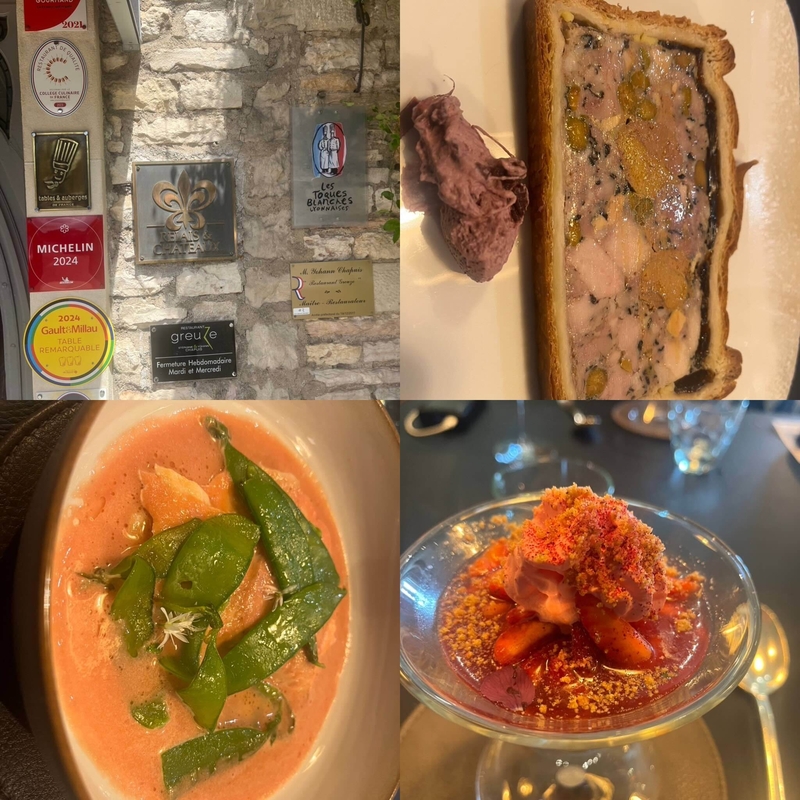
What chief Chapuis served up at the Bouchon Bourguignon
Confidentials
In Tournus, just off the Autoroute du Soleil, l’Ecrin de Yohann Chapuis holds a Michelin star, but next door its Bib Gourmand sibling, Le Bouchon Bourguignon, offers a menu of more affordable regional delicacies. And, yes, there’ll you’ll find Bresse chicken with morels and vin jaune de Jura. As an amuse bouche, don’t neglect to visit the great Romanesque Abbey of Saint Philibert just behind.
Vineyards, Valrhona chocolate and small town rivalry across the Rhône
The presence on Chapuis’ list of Northern Rhône wines signals we were closing in on the steep, terraced terroir producing some of France’s greatest reds and (under-rated) whites. Just two hours’ drive south to our next base, Tournon (sic), but en route logjam Lyon. That negotiated, mid-afternoon offers the perfect introduction to those wines (and matching cheeses) – a cruise down the big river courtesy of Les Canotiers du Rhône et Saône.
The name means a boater’s flat-topped straw hat with a ribbon band. This accoutrement wasn’t included but the six wines come from the Cave de Tain, the highly regarded local co-operative. The cruise is a lovely experience with its views of the Hermitage hillsides, where famous producers such as Chave, Jaboulet and Chapoutier have their top vineyards.
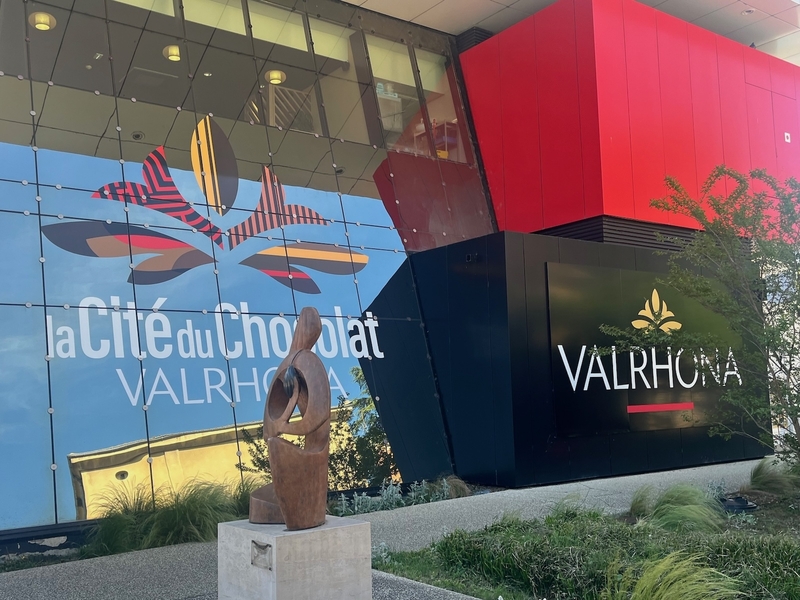
They are all on the Drôme department side. A bridge connects its wine centre Tain-l’Hermitage with more picturesque rival Tournon-sur-Rhône on the Ardeche bank. Both have lively Saturday food markets, little to choose between them, but Tain hosts the most obvious foodie tourist draw – La Cité du Chocolat, an educational pleasure palace come commercial outlet devoted to Valrhona Chocolate, which originated here.

Laurent pouring precious Cornas at Domaine Courbis
Confidentials
The Ardeche west side of the river has its own formidable wine appellations, notably Cornas and Saint-Joseph, with ample opportunities for tastings. Our inspired choice was family-run Domaine Courbis, the most southerly vineyard in Saint-Joseph, producing a range of reds and whites, including the rarer Saint-Peray. It has been in the Courbis family since the 16th century, but the winery and tasting room are very contemporary. Laurent, one of two brothers who run the estate, takes us up into the hills to see the various vineyard parcels with stupendous views over the meandering Rhône flood plain. Their top Syrah-based Cornas reds could cost you upwards for 60 euros, but they feel like a bargain and the individual experience is better than at the big name tasting rooms in Tain.
Valence – a sweet Vallée finale
By now we are on the fringes of Valence, the end of my gastronomic pilgrimage. If you really need to sate your sweet tooth voyage on to Montelimar, nougat capital of France. There they even have an interactive museum devoted to this confection of almonds, honey, and a light mousse of egg whites – the Palais des Bonbons et du Nougat.
Still Valence offers its own sweet treats aplenty. Take Suisse de Valence, a traditional cookie that is shaped like a man. Its design (and the name, because Suisse means Swiss) was inspired by the uniforms worn by Pope Pius VI’s Swiss Guards. As an opponent of the French Revolution, Pius was imprisoned in Valence by Napoleon and eventually died there.

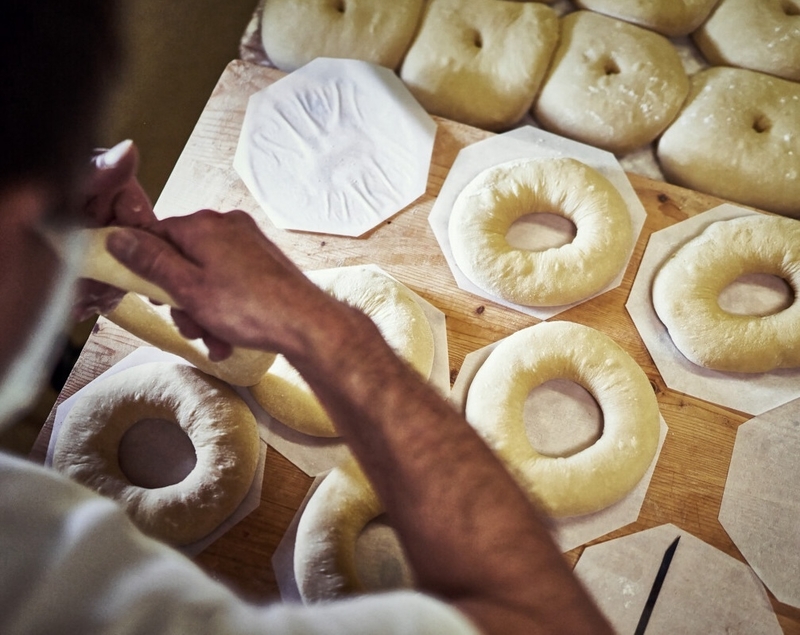
The cookie is made with shortbread flavoured with orange blossom and contains flecks of candied orange peel. It has a hat, a moustache, raison buttons on the uniform, and coffee beans for eyes. Its breakfast rival is Pogne, a ring-shaped brioche-ike loaf, often flavoured with orange and almonds. If you prefer a juicer treat seek out organic Baronnies apricots, a Drôme speciality.
For five days every September the elegant, historic town hosts its ‘Valence en Gastronomie’ festival, celebrating everything from its iconic pastries to the plethora of Michelin restaurants. Pinnacle is the 3-star Anne-Sophie Pic. In total across the globe she holds 10 stars. But any journey along the Vallée de la Gastronomie involves an abundance of simpler pleasures…
PLACES TO STAY ALONG THE VALLÉE
In Dijon Neil stayed at the four-star Hôtel Oceania la Jura, 14 Avenue, 21000 Dijon. +33 380416112. Close to the station and beautifully appointed with a garden and swimming pool.
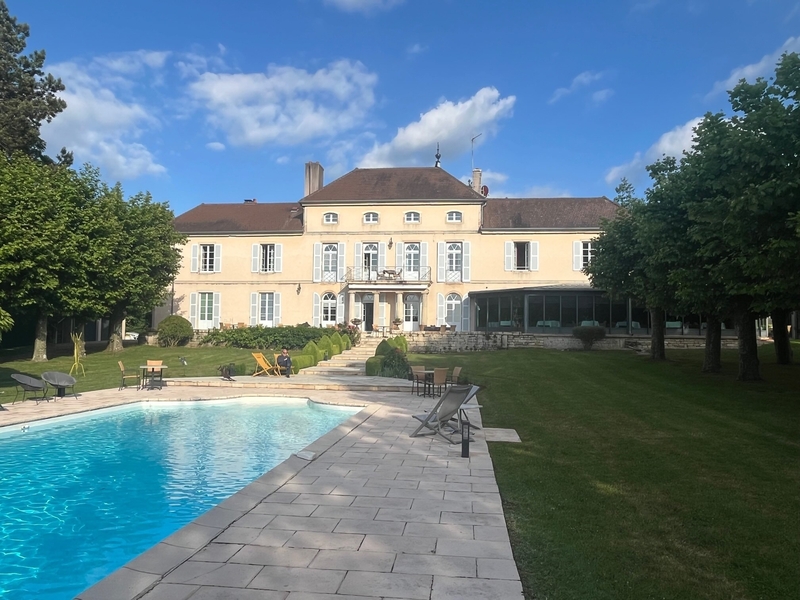
Mont Joly is a hugely attractive lodging
Confidentials

With superb food to match
Confidentials
His second overnight was at the four-star Mont Joly boutique hotel in Sampans on the edge of the Jura. There chef patron Romuald Fassenet has been elevated to ‘Meilleur Ouvrier de France’ for the quality of his cuisine. It is exceptional and so too are the six rooms/suites that allow you to feel like a resident aristocrat during your stay in this pink hued château. There’s a swimming pool in the formal grounds.

The surprising scenic gardens above the Hôtel de la Villeon
Confidentials
Hotel number three was the perfect base for Northern Rhône wine country. The four-star, 16-room Hôtel de la Villeon sits in the heart of Tournon-sur-Rhône. The facade of this 18th century mansion on a narrow street gives no clue to the quirky restoration inside, culminating in a 16m swimming pool at the top of tiered garden terraces. Breakfast with views.
The four-star Hôtel Clos Syrah on the outskirts of Valence is handy for exploring the Drôme, southernmost department in the Auvergne-Rhône-Alpes region. Scented by its many lavender fields, this feels where the South begins.
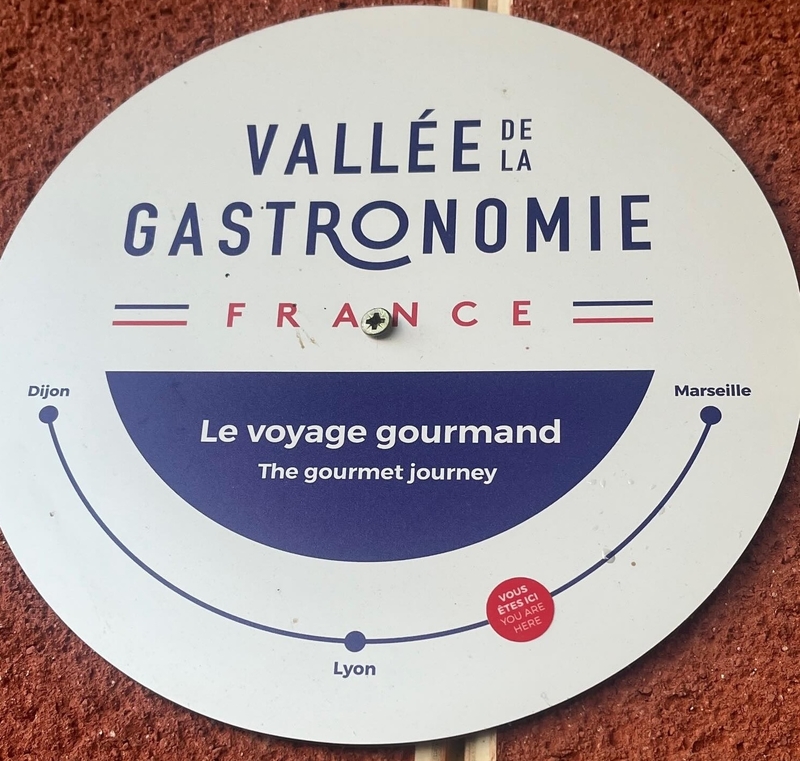
Fact file
Neil Sowerby travelled from London to Pairs with Eurostar and on to Dijon with TGV inOui. By hire car he then followed the Vallée de la Gastronomie, which encompasses three French regions – Burgundy Franche-Comté, Auvergne Rhône-Alpes and Provence Alpes-Côte d’Azur, which border the route 120km east to west.
The route follows the N6 and N7 major trunk routes, but I’d recommend exiting to so many scenic minor roads to experience the full flavour.
• Check out My 10 Things to do in Dijon (that don’t involve mustard)

